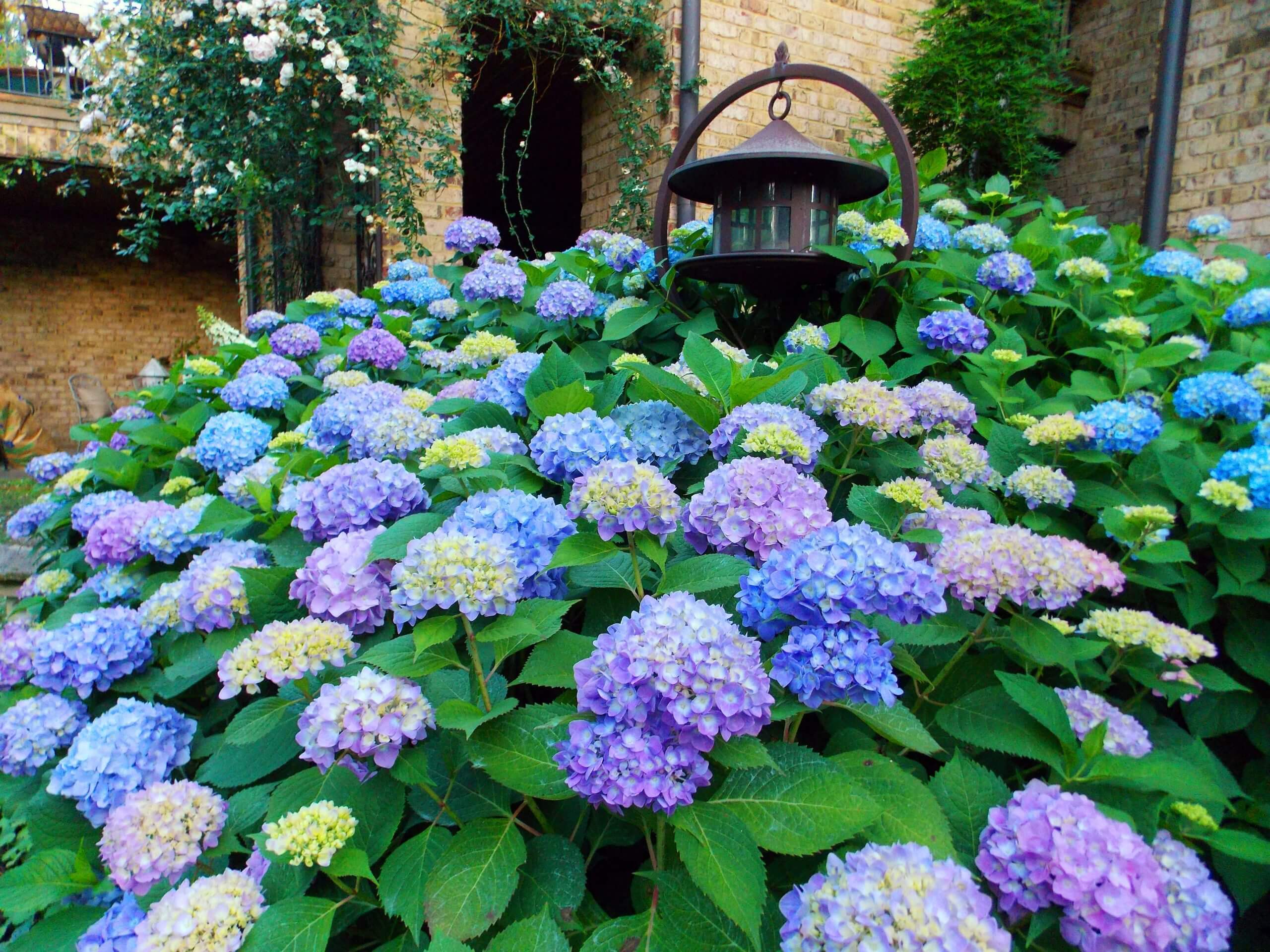When To Prune Hydrangeas, Different Varieties & Where To Plant Them!
With their big beautiful blooms held on bushy stems, Hydrangeas are hard to beat for summer color. Whether you have sun or shade, a small space or a large one, there’s a hydrangea for you! Knowing When To Prune Hydrangeas will let you get the most enjoyment from their flowers.
Big Leaf Hydrangeas (Hydrangea macrophylla) have huge colorful blooms ranging from pink and red shades to purple and blue. These hydrangeas have either mop heads (big ball shaped) or lace cap (clusters of tiny florets surrounded by large petals) type blooms. The color of the bloom can be altered by certain soil amendments. For blue flowers add soil acidifiers to lower the soils ph. For pink flowers add lime to raise ph, or sweeten the soil.
Most of these type hydrangeas set their flower buds on old wood, so they should be pruned minimally. This should take place directly after blooming. Some newer varieties, such as The Endless Summer family of hydrangeas, bloom on old and new wood, increasing their bloom time from late spring until frost. Plant big leaf hydrangeas in part sun and part shade for best results. Here’s a list of our Big Leaf varieties: Endless Summer, Bloom Struck, Twist n Shout, Cityline Rio, Cityline Paris, Cityline Venice, Let’s Dance Diva, Let’s Dance Rhapsody.
Panicle Hydrangeas (Hydrangea paniculata) have cone shaped flowers that are mostly white starting out. Some of the new varieties turn pink or red at the base as soon as they are in full bloom. All hydrangeas change hue as they age, turning from white to pink, or even burgundy. The Limelight Hydrangea starts out lime green before turning bright white.
Panicle hydrangeas like full sun and bloom on new wood. They can be pruned in late winter or early spring. Panicle varieties include: Limelight, Bobo, Little Lime, Tardiva, Vanilla Strawberry, Pinky Winky, and Quickfire.
Annabella or Smooth Hydrangeas (Hydrangea arborescens) have huge round ball shaped white blooms. These hydrangeas bloom on new stems, so prune them in late winter or early spring. Plant these beauties in part shade for best results. Varieties include: Annabelle, Incrediball, and Invincebell Spirit.
Oakleaf Hydrangeas (Hydrangea quercifolia) are named for the shape of their leaf. These have cone shaped white blooms that turn pink or burgundy with age. The leaves on the Oakleaf hydrangeas turn a beautiful red in the fall. Oakleaf hydrangeas like part shade and bloom on old wood, so prune minimally just after blooming. Varieties include: Ellen Huff, Snow Queen, Jet Stream, and Pee Wee.
Mountain Hydrangeas (Hydrangea serrata) are native to the mountains of Korea and Japan. They look like lace cap type but smaller. Blooms can be shades of pink, red, purple and blue. They like part shade and bloom on old wood. No pruning necessary. Tiny Tuff Stuff is a nice variety.
Climbing Hydrangeas (Hydrangea petiolaris) is a vigorous vine that blooms white. It likes the shade and can grow very large. Blooms on new wood so you can prune to control height. Prune in winter or early spring.
Usage
A single Hydrangea can be used as an accent or specimen. Several large Hydrangeas can also be used to create a living screen. There are smaller varieties that can be used in tiny spaces, or even in containers.
Two of the most frequently asked questions about Hydrangeas are:
Why don’t my hydrangeas bloom?
Lack of sunlight could be the problem. Hydrangeas need 5 hours of sun each day.
Pruning at the wrong time is another common reason hydrangeas don’t bloom. Refer to each style in the blog for pruning times.
Hydrangeas that bloom on old wood can have their bloom buds frost bitten in spring. As the temperature warms in late winter and early spring, the buds can start to swell, then we get a frost and the blooming buds can be damaged.
Why does my hydrangea wilt in the afternoon?
Here in East Tennessee, Hydrangeas wilting on a hot summer afternoon is normal. Heat wilt can happen even if the soil is moist. If your Hydrangea wilts in the afternoon wait until sundown to see if it revives. If it is still wilted after sundown, the soil is probably dry.

